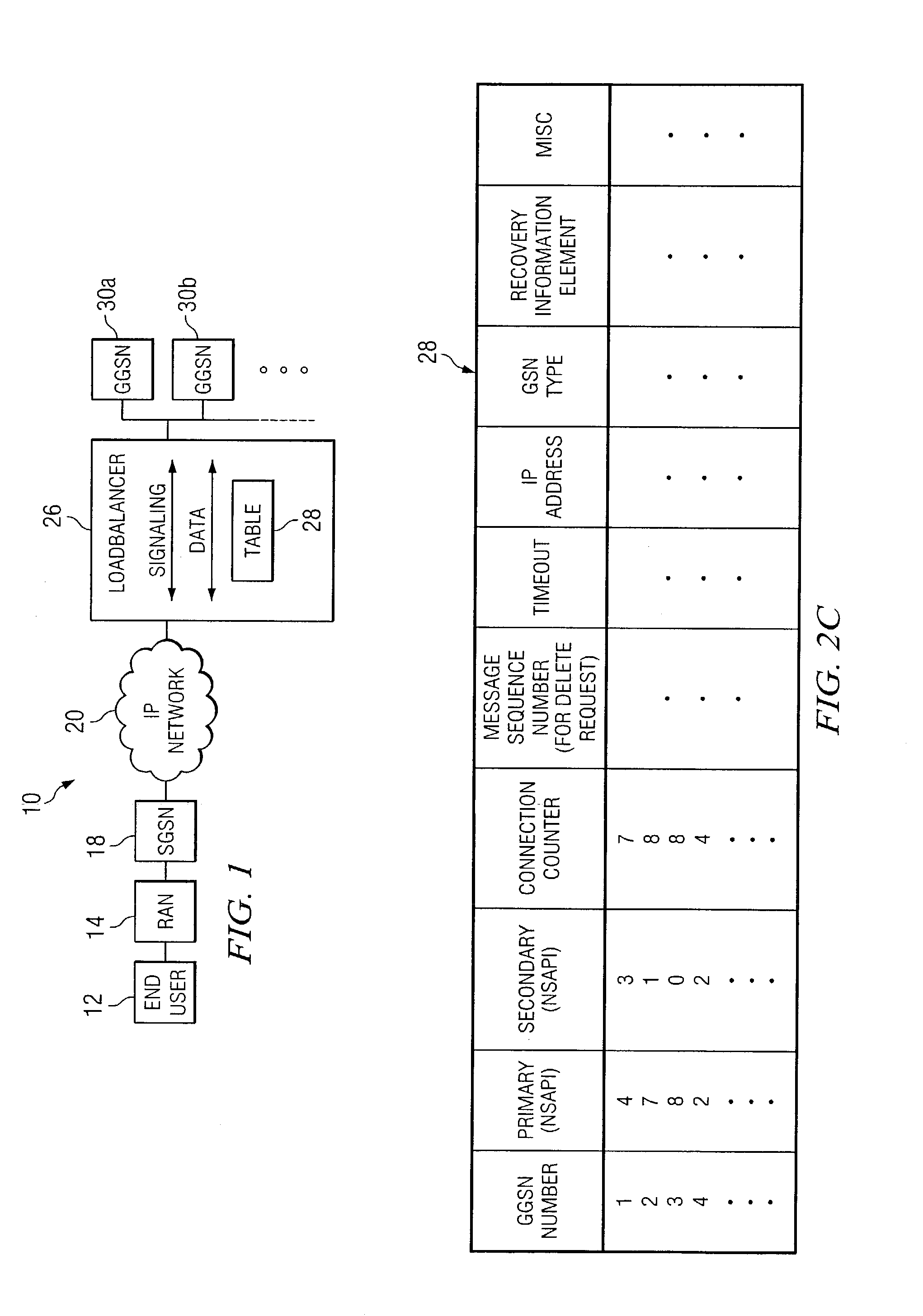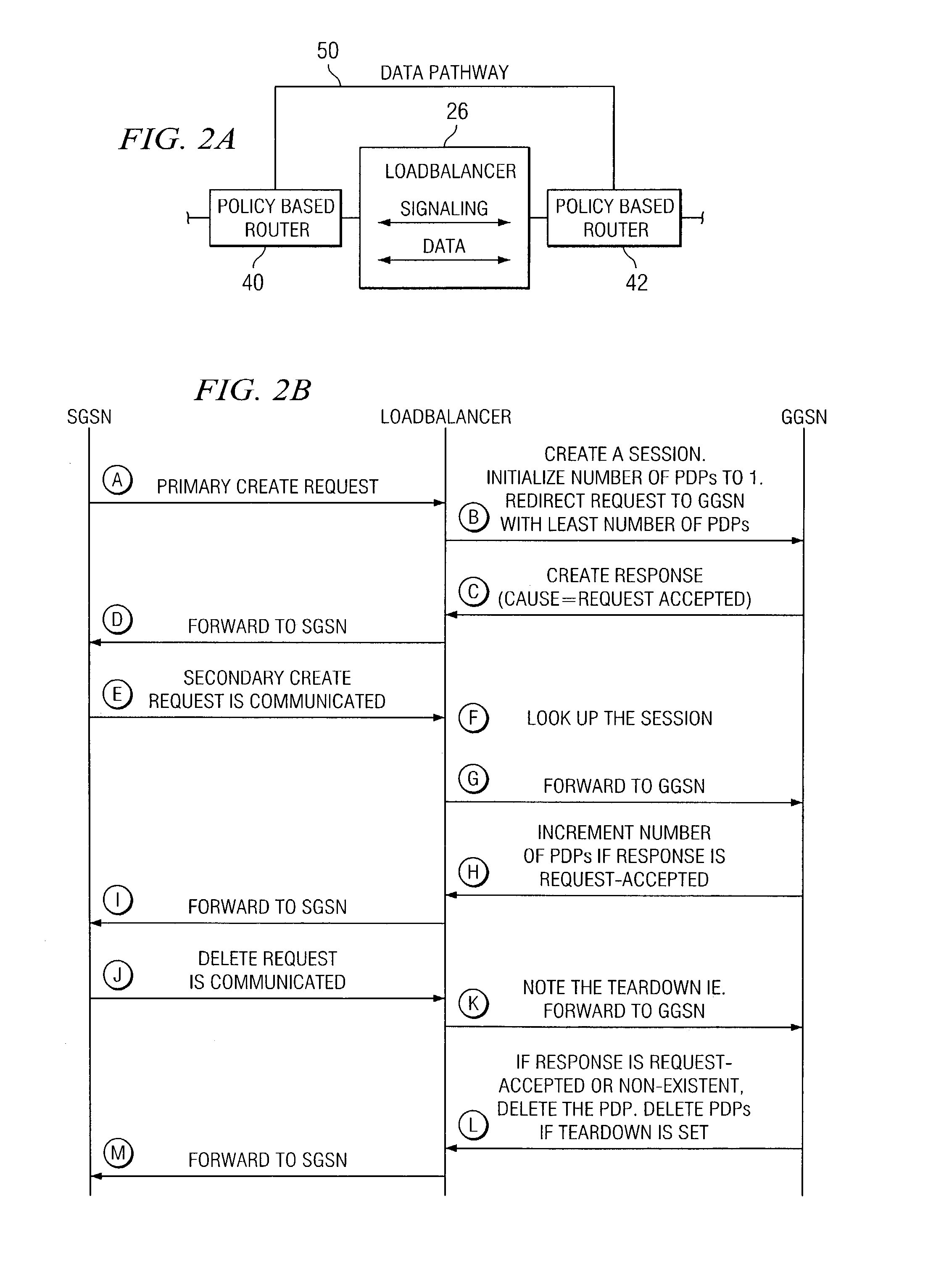System and method for loadbalancing in a network environment
a network environment and loadbalancing technology, applied in the field of communication, can solve the problems of untapped network resources, certain network components may be overwhelmed, network architectures have grown increasingly complex in the communication environment, etc., and achieve the effects of efficient data delivery, accurate distribution of work, and efficient loadbalancing
- Summary
- Abstract
- Description
- Claims
- Application Information
AI Technical Summary
Benefits of technology
Problems solved by technology
Method used
Image
Examples
Embodiment Construction
[0014]FIG. 1 is a simplified block diagram of a communication system 10 for communicating data in a network environment. Communication system 10 includes an end user 12, a radio access network (RAN) 14, a serving general packet radio service (GPRS) support node (SGSN) 18, and an internet protocol (IP) network 20. Additionally, communication system 10 may include a loadbalancer 26 (that may include a table 28) and multiple gateway GPRS support nodes (GGSNs) 30a-b. FIG. 1 may be generally configured or arranged to represent a 2.5 G communication architecture applicable to a Global System for Mobile (GSM) environment in accordance with a particular embodiment of the present invention. However, the 2.5G architecture is offered for purposes of example only and may alternatively be substituted with any suitable networking protocol or arrangement that provides a communicative platform for communication system 10. For example, communication system 10 may cooperate with any version of a GPRS...
PUM
 Login to View More
Login to View More Abstract
Description
Claims
Application Information
 Login to View More
Login to View More - R&D
- Intellectual Property
- Life Sciences
- Materials
- Tech Scout
- Unparalleled Data Quality
- Higher Quality Content
- 60% Fewer Hallucinations
Browse by: Latest US Patents, China's latest patents, Technical Efficacy Thesaurus, Application Domain, Technology Topic, Popular Technical Reports.
© 2025 PatSnap. All rights reserved.Legal|Privacy policy|Modern Slavery Act Transparency Statement|Sitemap|About US| Contact US: help@patsnap.com



